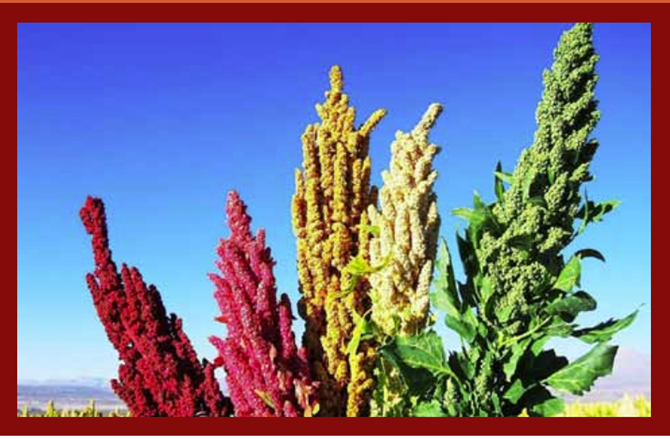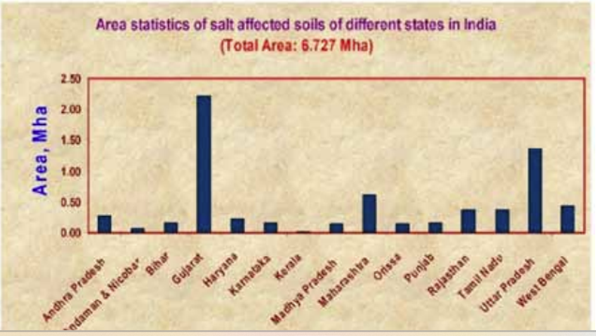(Srinivasa K. Rao, Ph.D.)
PM Modi suggested taking up a project with Big Impact on India when we discussed malnutrition in 2010 — Million Tons of Quinoa can do it!

Malnutrition, diabetes, and obesity-related diseases are increasing In India. It is due to a lack of consumption of nutritious food. Foods with more protein, fiber, minerals, vitamins, antioxidants, and health-promoting factors like flavonoids are the need of the hour. Quinoa is a staple food staple that fits the nutritional parameters for food-of-the-moment.
Rice and Wheat Consumption & Production in India
Humans have 20 grains to consume as staple foods. A staple is food eaten often and in such quantities that it constitutes a dominant portion of a standard diet for a given person or group, supplying a significant fraction of energy needs. As there are significant changes in the lifestyle of people both in urban and rural due to the mechanization of various activities, calorie requirement is less, and the need for nutrients needed for better health is rising. Micronutrient deficiency, also known as hidden hunger, is a significant health problem in the country. Therefore, there is an urgent need to cultivate new grains that can be used as a staple food with better nutrient profiles.
What is Quinoa?
Quinoa is a seed of the plant Chenopodium quinoa and is spinach’s close cousin. According to FAO, there are 7,000 edible plants. However, up to 150 crops are cultivated commercially. Only three main crops, rice, maize, and wheat, provide 60% of the world’s food energy intake. Many edible plant species are ‘Neglected and Underutilized Species (NUS). Quinoa is one of them! Quinoa has been cultivated in South America for more than 7,000 years. Colonization by Europeans suppressed the crop. But two scientists, Dr. Greg Schlick and Dr. David L Bubenheim, NASA, USA, published that “quinoa has desirable food qualities for long-term space missions — high protein and desirable amino acid composition.” The UN’s Food and Agriculture Organization (FAO) declared 2013 as the International Year of Quinoa as a recognition of the “crop’s resilience, adaptability and its potential contribution in the fight against hunger and malnutrition.” FAO hopes Quinoa can boost food security and provide economic growth to small-scale farmers as the crop does not demand much soil fertility, water, and labor.
Quinoa, Wheat & Rice: Nutritive values

Quinoa’s average protein content (> 13%) surpasses that of wheat (12%) and rice (8%). It has high-quality protein and well-balanced amino acids with vitamins and minerals, particularly iron. Quinoa is gluten-free and suitable for people with digestive disorders. Dr. AA Dixit, Columbia University, New York, reported that “quinoa replacement with one serving of white rice in diet can prevent obesity and cardiovascular disease.” It can be consumed like a staple food, replacing wheat or rice, unlike other protein-rich foods.
A million Tons of Quinoa in India by 2025

Quinoa production in India is at a nascent stage, with less than 20,000 tons per year. Large-scale farming can be encouraged if appropriate R&D is taken to improve seed quality and yield and establish pest-resistant varieties. India has 6.727 million hectares of salt-affected lands based on the NRSA and Associates 1996 data. C. quinoa grows well under moderate salt stress (one hundred–200 mM of NaCl) and can withstand a concentration of 400 mM of NaCl. If some of these lands are brought under quinoa cultivation, India can produce more than a million tons of Quinoa per year. Then India can meet not only the country’s needs but also export.
Big-Impact Project To Reduce Malnutrition
In 2010, PM Shri Narendra Modi was the chief minister of Gujarat. At that time, he had asked me to take up a project with a Big Impact on India when we discussed the malnutrition situation in India in our meeting in 2010 at his residence in Gandhinagar. In the following two years, I researched whether Quinoa could be a big-impact project to reduce malnutrition and improve health in India. Several students and researchers in India, Bolivia, and The Netherlands helped me to realize that Quinoa can! Also, with experienced agricultural and nutritional researchers, I proposed an Indian Quinoa Research Center to the governments of Gujarat, Rajasthan, Andhra Pradesh, Telangana, and Ladakh. In parallel, I started cultivating Quinoa in 2012 at Araku Valley. After a few years of cultivation, I visited Bolivia and learned how to process the grain for ready-to-cook. We have successfully launched Dr. Quinoa Brand. This brand is instrumental in bringing the price from Rs.1200 per kilo to Rs.200. I published a book on Quinoa Nutrition & Health Benefits. I made it available for free download to encourage people to adopt o quinoa. I showed that Quinoa could replace rice in all the rice-based recipes. We published the Quinoa Cookbook and made it available for free download. I have been consuming Quinoa as the main staple for the past 12 years. Quinoa farming in India has some teething problems, and if they are addressed well, India can have Quinoa at a very affordable price. Once Quinoa is made affordable to everyone, like rice, its benefits can be seen as reducing malnutrition, obesity, diabetes, and the related disease burden in India. If this approach is adopted for several other crops that are neglected or underutilized healthy India vision can be fulfilled by Indian Agriculture!
